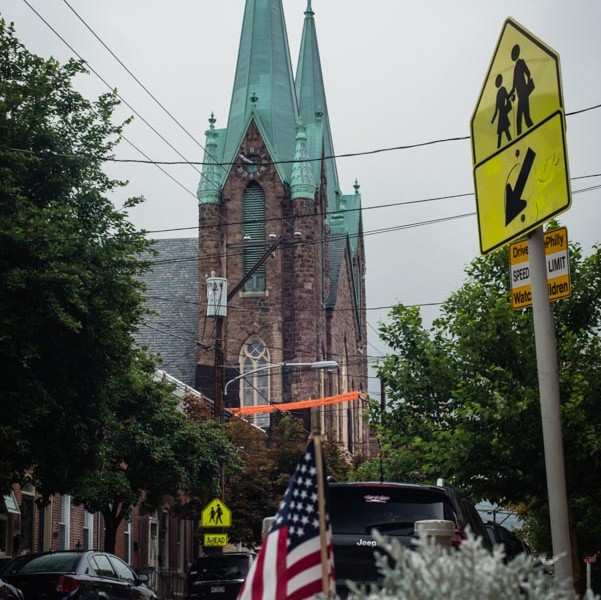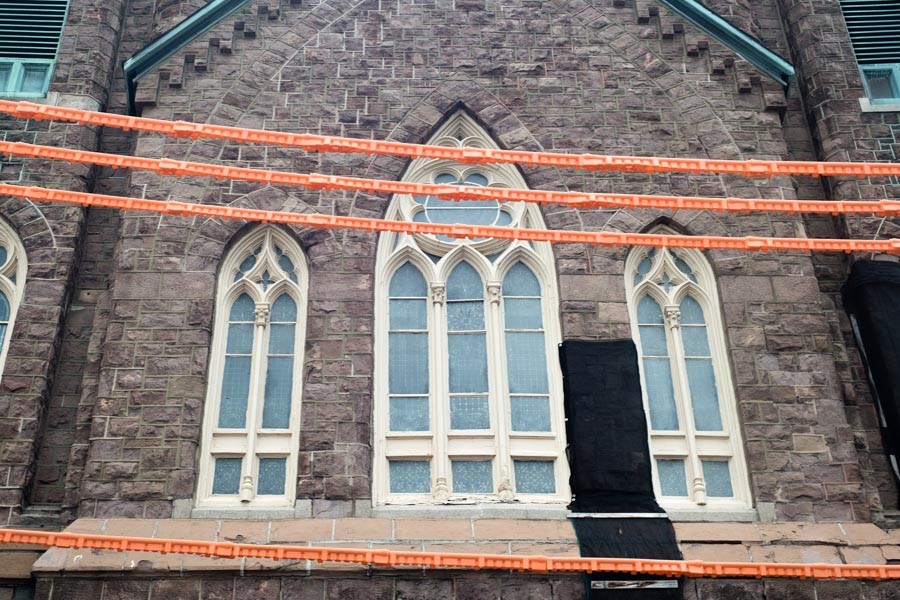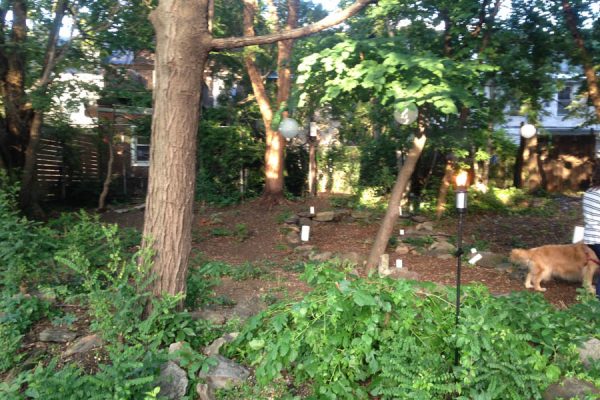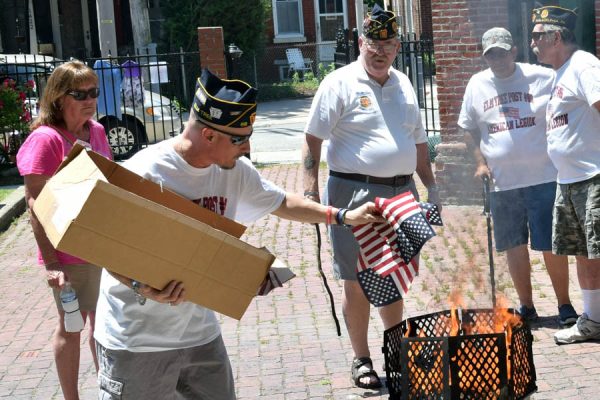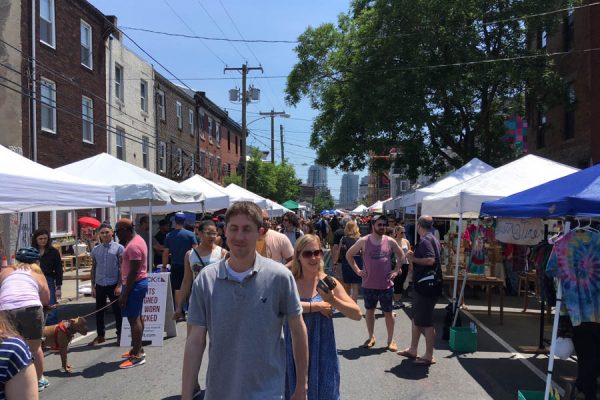Holy Repurposing: Can St. Laurentius Set New Precedent For Adaptive Reuse?
The Philadelphia Historical Commission’s July decision to make St. Laurentius a historic structure has protected it from demolition. In the same breath, it has left a number of unanswered questions regarding the future of the 19th century church. For example, who will retain ownership of the building, and what will the building be used for moving forward?
The Archdiocese and members of the Holy Name of Jesus parish remain in control of St. Laurentius. Together, they posses the legal standing over its ownership. In the coming months, this may be questioned in court by Save St. Laurentius (SSL).
To date, there have been at least five developers interested in purchasing the church from the Archdiocese through Brendon Flynn of The Flynn Company, a real estate agent representing the property. No additional confirmed details about the sale of the church appear to be on the horizon.
Meanwhile, SSL still looks to continue their role within the church in some fashion. What exactly SSL would do with the church is anyone’s guess, but on numerous occasions leading members of the group have made their objectives clear — to facilitate an adaptive community reuse of the structure.
But what exactly is adaptive reuse and how would it relate to St. Laurentius? “Adaptive” implies that elements of the original character of a building would survive and remain intact, while new components are added to modernize the structure.
SSL group leader AJ Thomson sees adaptive reuse as the only viable option left moving forward.
“I think it’s the only option… We can’t control whether or not [the Archdiocese] puts a priest there or have mass there. That’s up to God and apparently he didn’t want to get involved,” Thomson said. “But we want to see the church saved whether or not it functions as a place for mass anymore, or as a place where people can congregate… A performing arts space or a meeting place, that’s what it’s all about. It was built for people by people for usefulness.”
Uncertain of a precedent for an adaptive reuse of a structure like this, The Spirit once again sought the insight of John James Pron, a former Temple University historical architecture professor of 37 years. Pron specializes in the areas of historic preservation and adaptive reuse.
According to Pron, adaptive reuse goes beyond changing the structural nature of a building. It deals with the manner in which we come to understand the fundamental purpose of the structure and which groups and organizations use it.
“St. Laurentius could have a [new] meaning, not just in terms of its outside facades and towers and not just for practicing Catholics,” Pron said. “If many people from the neighborhood would access the building for their own daily needs — glancing inside, seeing the altars, the stained glass windows — it would be more part of the community, functionally and symbolically beyond a particular religious offering to a single group.”
Rachel Hildebrandt, Program Manager at Partners for Sacred Places, is also familiar with adaptive reuse. She points out that it is imperative for people to see the larger concept behind adaptive reuse, a concept that lifts the cultural framework of a building into a new era, in order to meet the changing needs of the community.
“It’s all about persevering the identity of the building while adapting it to suit new needs,” Hildebrandt said.
When it comes to combining religious and secular elements for an adaptive reuse of a space, like what Pron and Thomson imagine for St. Laurentius, Pron could only list a strikingly small number of active, local examples. He cites an article in Hidden City Philadelphia by Christopher Mote that lists a few local examples of abandoned churches that have been repurposed.
The Baptist Temple at Temple University is now used as a rental concert venue and a major auditorium for university events. Another example is Grace Evangelical Lutheran Church on Roxborough Avenue, which is currently being used as new medical offices and a national imaging center. The Rothschild Memorial Synagogue in West Philadelphia is used as an all-in-one space for adult recreation, education and counseling services.
“All these uses could conceivably be located in a building like St. Laurentius but without kicking out the congregation,” Pron said.
Pron also points out that a number of other countries around the world, such as England, have successfully created adaptive reuses for historical churches and architecture. He knows of two churches specifically, both of which are more than 3,000 miles away in Cambridge. He describes them as benchmark standards, from which those putting forth an adaptive reuse concept for St. Laurentius can learn. These examples are St. Paul’s and St Michael’s.
“England has been a Christian country for much longer so its architectural history of church design and its inventory of church construction is far more ample than the US,” Pron said. “The US is a relative newcomer to the issue and to creative solutions.”
According to Pron, both St. Paul’s and St Michael’s exemplify quality architecture, inside and out. “This is a biggie and important,” Pron said. On the outside, both structures are neighborhood icons, even with an increasing number of residents who are not Catholic or not religious. On the inside, the buildings serve various functions that serve the daily needs of residents. The structures take form in a manner that manifests the identity of the entire area, while at the same time, enriching the character of the surrounding community. Both English churches also retain a viable congregation, committed to continuing its use for religious purposes.
Sound familiar? We thought so.
A similar collective and adaptive reuse model for St. Laurentius was recommended by one of our readers, David S. Traub, in a recent Letter To The Editor. Traub is the co-founder of Save Our Site, an organization focused on advocating for the preservation of sites and structures deemed valuable all over Philadelphia.
“My own proposal would be for a hybrid use, in this instance, a combination Riverwards performing arts space, a celebration hall, a museum of local catholic history and artifacts, all of those uses mixed together, while retaining its function as a religious sanctuary, perhaps multi denominational,” Traub said.
The Spirit also spoke with Ken Weinstein, an adaptive reuse developer who has more than 20 years experience in the field. Weinstein is currently in the process of bidding for St. Laurentius with the intention of developing it. He spoke with us about his possible plans for the structure if he were to obtain ownership of the building, as well as other potential uses for the building that other developers may see as viable.
“I think that the two most likely adaptive reuses are residential, either condos or apartments, or, if the community is open to the possibility, some sort of pub or restaurant concept,” Weinstein said. “In this case, the renovation of the building would be less expensive with some sort of restaurant use because the interior of the building is left wide open.”
Regardless of who is handling the repurpose, Weinstein believes the project must remain affordable in order for developers to remain interested. Economics weigh heavily on any realistic chance at creating a successful adaptive reuse.
“It goes in one of two directions: Either the owner gets realistic and sells for an affordable price and the building gets restored or it just continues to deteriorate until there is no other choice but to take it down,” Weinstein said.
Oscar Beisert, architectural historian and the man who nominated St. Laurentius to the Philadelphia Historical Commission, believes the latter outcome would be the worst possible option for the community. Beisert agrees with Pron and Traub, in that a creative solution is necessary for a proper adaptive reuse, but he also sees a few burdensome complexities.
“I think that it could be used as a community center, like [United Methodist Church] on Baltimore Avenue [in West Philly]. Now, for it to remain a church with the city stepping in some way, (potentially helpings to fund it through grants and taxpayer dollars) that raises some issues,” Beisert said. “Now, could they still worship there if it’s a community center? Of course, but anyone should be able to.”
Pron adds more insight into the possible obstacles that come along with repurposing a structure for both a secular community and and religious purposes. These obstacles are a primary reason why the adaptive reuse of churches in such a way are so few and far between.
“I suspect that the economic legalities of a building that is partially still a worship space for a congregation, but that might also have private investment in developing commercial and residential uses within the same four walls, are very, very complicated in the United States,” Pron said. “The legal issues, the ownership issues, the zoning issues, all these things are hugely complex.”
Weinstein, the developer vying for the property in a bid to the Archdiocese, also sees economics as the main roadblock for repurposing the church but for a different reason.
“I have made it clear to the real estate broker that the asking price of $750,000 is totally unrealistic. The price needs to move down significantly in order to have me or anyone else interested,” Weinstein said.
Weinstein also found that potential repurposing costs have shot up significantly because of the building’s recent historic designation. This is due to its now increased value and various bureaucratic clearances required by the Philadelphia Historical Commission for historic structures. In short, some developers, including those looking to create an adaptive reuse of the building, may pass up on buying the church because they don’t see it as an economically viable investment.
Hildebrandt, Program Manager at Partners for Sacred Places, thinks that developers have a tendency to get caught-up in looking at the figures, rather than thinking of creative ways to repurpose.
“There are groups of developers in Philadelphia right now, who are very preservation-sensitive, who are doing great work with all kinds of buildings, including religious buildings. But of course, there are developers who just see the bottom line,” Hildebrandt said. “But if you see a developer come in who is preservation-sensitive, you are more likely going to have a better outcome.”
When it comes to the bottom line of what will happen to St. Laurentius, Pron makes it clear that what defines a successful repurpose is how it meets the serious and growing needs of the community. He puts forth striking questions for those in the community to ask themselves moving forward.
“Is there homelessness, illegal immigration, a lack of educational opportunities, hunger, abuse of alcohol and drugs, severely limited or unsatisfactory health services (Urgent Care Centers or Public Health Clinics, libraries, playgrounds, etc). Are there abused women and children shelters [in the neighborhood]? Is there enough daycare?”
Pron knows that these aren’t issues that all residents of Fishtown face, but he puts forth these ideas as a means to create a constructive dialogue about what this church should eventually become. In his view, this is a debate that the community desperately needs to have. Having this conversation may be just as intense and trying as finding a sustainable financial foundation for the adaptive reuse of the church. Having these conversations can be hellish but they are ultimately for the greater good.
Pron sees the mixed reuse of the church as the best viable option for the community. With the potential for so many groups to actively use the church together, the new reuse could avoid the pitfalls that led to the parish of St. Laurentius no longer being able to sustain itself economically. If many groups pitch in to maintaining the structure and use it together, the financial burden would be dispersed among the various groups.
“This is what the dwindling congregation of St. Laurentius is facing. Can that church space accommodate spaces for other smaller religions and other value systems: LGBT community, Tea Party veterans groups, single mothers, immigrants, Buddhists, Muslims, etc. Under the aegis of St. Laurentius, it could be the perfect place to openly tolerate and indeed respect, diversity,” Pron said.
“It’s a tricky balance, serving both the church and the Fishtown community…but it’s a vision.”
